The Comana Natural Park
One of the most beautiful natural parks in Romania

Daniel Onea, 04.06.2015, 14:08
Romanias most important area in terms of biodiversity, second only to the Danube Delta, the Comana Natural Park lies only 39 kilometers from Bucharest. The park has a very rich offer: tourist routes through the dense woods, where you can see century-old trees, nature monuments, lake arrangements as well as a monastery reminding everyone of the legendary ruling prince Vlad the Impaler. There is also an adventure park close by, tailored for families. You can find out more about all these in todays edition of Traveler s Guide.
The Comana Natural Park is a park with a rather small surface area, says the park administration director Valentin Grigore, who will now be giving an outline of our destination today.
It has a surface area of almost 25,000 hectares. For a usual size in Romania, it could be a medium-sized park. On the premises, we have an altitude difference ranging from 25 to 45 meters above sea level. The highest point is a string of hills, as what we have is a typical plains. In the park, there are roughly 8 thousand hectares of forest, two thousand hectares of wetland, swamps and waters. What we have here is Romanias second Delta. It is the Comana Swamp, which is something unique countrywide. It has a surface area of 1,200 hectares. A great biodiversity is clustered in the region. We have 212 species of water birds, the flora is also very rich. The park boasts 1,250 plant species. “
Dont expect typical mountain tourism if you get there, consisting of hikes or camping trips of one-two weeks. The area is known for a different kind of tourism: weekend tourism. From the park administration director Valentin Grigore, we found out that although it is mostly Romanians who visit the Comana Natural Park, foreign tourists are a regular presence as well.
Last week we had a group of tourists from Great Britain, also for short, one-day trips. They usually turn up in the morning and leave in the evening. Those who opt for setting up camp or those who book a room in the guesthouses in the region are very few. We had Czechs, Slovaks. When they get to visit Bucharest, they do a bit of research and thats how they learn about this marvelous region, lying so very close and come here for a day. All in all, weve had positive, favorable feedback. There really is something worth seeing for them in the region. Last year we accompanied a group of Austrian tourists in the Comana Swamp. They were impressed with our little delta. We are thus trying to promote it. We edited leaflets in English, we have maps we give out to tourists. They are not translated at the moment, but were working on a translation right now. We have also maintained our connection with partners from all around Europe, for the promotion to be included in transnational programs. We have thus been trying to promote ourselves locally and increasingly, outside the country. “
The forest is teeming with butterflies, and if you happen to take a stroll through the woods, you can see the does. There is also a Celtic village, with old, thatched-roofed fishermens huts you can only reach if you manage the cut a path through the turtles. But the Comana Natural Park is a must–visit destination for all bird lovers. Right now, there are six ornithological observation points, says park administration manager Valentin Grigore.
There are four destinations for specialized, research tourism. There are ornithologists who come over. A rather high-ranking official from the Embassy of Japan used to come here regularly for bird watching. We also have a wooden trestle bridge, over 100 meters long, to get access to the middle of the swamp. From there sightseeing is much better. There is also a video monitoring system for areas around here. You can go horse-riding, you can try archery, abseiling routes, kayak and rowboat rides. We also have our own kayak, rowboat or bike rental center. We have routes especially designed for tourists. The Comana Natural Park Administration makes available a couple of types if services for tourists. The car parking daily fee is 3.5 Euros. The camping fee stays the same for each tent. You can rent gazebos if you want to have outdoor parties for all sorts of events. A 30-seat gazebo can be rented for 90 Euros per day. A one-hour motorboat ride costs 30 Euros. The boat ride includes the boatman, who also acts as a guide, as well as four seats for tourists. Kayak rentals cost 15 euro per hour. Non-commercial filming is allowed for free, while commercial shooting is being charged.
One of the most sought-after tourist assets is the Comana Monastery. It was founded by Ruling Price Vlad the Impaler and it was first mentioned on September 27, 1461, in a document issued by the Ruling princes chancellery. The Comana Monastery is the only fortified monastery in the area, with walls and defense towers. The history of the monastery was troubled, while the monastery itself used to be a defense fortress for the country, also acting as a defense element for the faith, says father Mihail Muscariu, who is the prior of Comana Monastery.
“From the chronicles of that time, weve learned that he [the ruling prince] was murdered on the trade route linking Bucharest to Giurgiu, late in 1476. The collective memory of the locals has to this day preserved the spot where he was allegedly murdered, near the monastery. There a fountain sprang, known to this day as the Fountain with the Walnut Tree, or the Spring with the Walnut Tree. It appears that his closest soldiers or a few monks took the ruling princes body. Vlad the Impaler was beheaded. His head was taken to the High Porte in Constantinople, so that the Sultan could have the proof he was killed. What is even more interesting is that centuries later, in the 1970s, a team of Romanian archeologists made excavations close to the present day belfry, and to the right of the narthex, the remains of a beheaded man were unearthed, with no inscription, but the coins around the body dated from Vlad the Impalers time. Of course, since there was no inscription, history took only one hypothesis into account. A Romanian professor, the historian Constantin Rezachevici, who is still living, also wrote a book where he writes that Comana is most likely the burial place of ruling prince Vlad the Impaler.






























